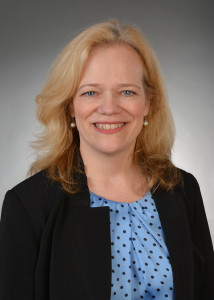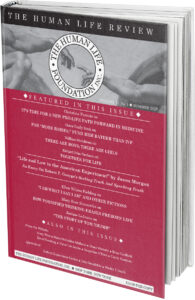BOOK Review: TWO PATIENTS: MY CONVERSION FROM ABORTION TO LIFE-AFFIRMING MEDICINE
TWO PATIENTS: MY CONVERSION FROM ABORTION TO LIFE-AFFIRMING MEDICINE
Dr. John Bruchalski with Elise Daniel
(Ignatius Press, 2022, paperback, 185 pp., $17.95)
Reviewed by Maria McFadden Maffucci
_____________________________________________________________________
Dr. John Bruchalski is indeed a blessed man. In his recent memoir Two Patients: My Conversion from Abortion to Life-Affirming Medicine he tells us there were two times in his life when God made His presence known with a divine message meant just for him. Still, the doctor suffered greatly when he realized why he’d needed two visitations: The first, which occurred at the shrine of our Lady of Guadalupe in Mexico City, had not been enough to convince him that what he was doing as an obstetrician—delivering and aborting babies—was not God’s will.
Raised in a loving, Catholic family in New Jersey, Bruchalski knew from an early age that he wanted to be a doctor. After graduating from the South Alabama College of Medicine in 1986, he began an externship in rural Virginia, which solidified his decision to go into obstetrics and his desire to serve the poor—something, he says, instilled in him by the Jesuit model of the Catholic undergraduate school he attended.
So the following year, when a friend asked him to join a mission trip to help a priest in Mexico City build a water-purifying system for his parishioners, Bruchalski was all in. During the five-day stay, he and his companions visited the shrine of Our Lady of Guadalupe—located on Tepeyac Hill. At best a lukewarm Catholic, he was fascinated by the historical significance of the tilma—a hand-woven mantle miraculously imprinted with an image of Our Lady—but figured it was a “Catholic myth,” the tilma a “fraud.”
And yet on joining the throngs of tourists and pilgrims on the moving walkway in front of the shrine, he was “unable to absorb what I was seeing before my eyes: an ancient relic, somehow youthful in its luster, yet nearly 400 years old, with colors so crisp they challenged every preconceived notion” he had brought with him. He moved past the shrine several times. Feeling confused, he sought a quiet seat in a pew, putting his head in his hands. And then, from out of nowhere, a voice asked, “Why are you hurting me?”
Stunned, his heart racing, Bruchalski looked around to see if anyone else had heard it. Seeing there was no reaction, he calmed himself down, eventually dismissing the experience. “It must have been the heat,” he told himself, “or the cerveza I had at lunch. Either way, my faith life was lousy, and I knew it. I couldn’t possibly have heard a voice from God.”
During his next career step, a residency in Norfolk, Virginia, Bruchalski continued to terminate unwanted pregnancies, even assisting at partial-birth abortions of babies with disabilities. At times he was “tempted to mourn the innocent lives lost,” but would reassure himself that he was “eliminating suffering,” which was “merciful,” and “what I have to learn to do to be a good doctor.” With time, “my heart became like steel, hard and unyielding.” The voice he’d heard in Mexico City “became a distant memory,” and “I pressed on with more abortions, linked arm in arm with the medical status quo.”
In 1989, however, something happened that shook him to his core. A woman who was experiencing pregnancy complications decided she wanted an abortion. Bruchalski, relying on the woman’s estimation of how far along she was in the pregnancy, proceeded to abort only to discover on delivery that the baby, still alive, weighed over the legal limit for abortion in Virginia. In a panic, he paged neonatal intensive care and moved the baby to a warmer. The neonatologist on call rushed in with her team, and when she had prepped the baby to be transferred to the NICU, she pulled Bruchalski aside:
“Stop giving me tumors John.”
“What?”
“Stop treating these babies like they’re tumors. You’re better than that. You’re a good physician.
“Did you hear me, John? The mother shouldn’t be your only concern in these delivery rooms. You have two patients, not just one.”
Her words hit him in the gut, made his head spin. Somehow, he knew he would never be the same, but he wasn’t sure why. In a discussion the next day, the neonatologist again urged him to consider both patients; she also asked if he’d ever gone to Medjugorje, a place he’d never heard of. In a strange coincidence soon after, his mother asked him to go along with her on a winter break trip to—Medjugorje, the village in Bosnia Herzegovina where, in 1981, six children claimed to have been visited by the Virgin Mary. While the authenticity of these visions is still under study by the Vatican, millions of people have since travelled to Medjugorje, many of whom insist they received visions and miracles. As does the good doctor. But I won’t give it away—you’ve got to read it yourself, just as Bruchalski describes it. “I don’t know for sure why God chose to speak to me in such a strange and unbelievable way,” he relates, “but maybe he had to. My heart was so hard and my soul so entrenched in sin that I needed a radical encounter.”
Bruchalski came back from Medjugorje a changed man. Determined to be a doctor who “heals instead of hurts,” he joined a pro-life practice. Then, because he was called to serve the poor, in 1994 he and his wife Carolyn, a nurse, opened the Tepeyac Center, a “pro-life faith-based obstetrics and gynecology practice for all women—insured, underinsured, and uninsured.” From its shaky, underfunded beginning, Tepeyac OB-GYN, located in Fairfax, Virginia, has grown and expanded; in 2000 Bruchalski founded Divine Mercy Care, a non-profit to support the center and advance pro-life health care.
Two Patients is an inspiring book for believers; after Medjugorje, Bruchalski immersed himself in Catholic ethics and practice and was transformed, he says, “like a dead man brought back to life.” But it offers much for a secular audience as well. Because Bruchalski first performed abortions with a sincere belief that he was helping women, he deeply understands both sides of the issue. He doesn’t demonize or caricature those with whom he has come to disagree.
While our culture seems to thrive on anger and spite for those on the “other” side, Two Patients is an invitation to the unconvinced to consider whether abortion can ever be the best answer for both mother and child. And in Dr. John Bruchalski’s story, told with humility and compassion, we see how it is always possible for even those entrenched in the abortion culture to embrace the truth about life and become a witness for others.
__________________________________________
Original Bio:
—Maria McFadden Maffucci is the Editor in Chief of the Human Life Review.



 is the Editor in Chief of the Human Life Review
is the Editor in Chief of the Human Life Review





